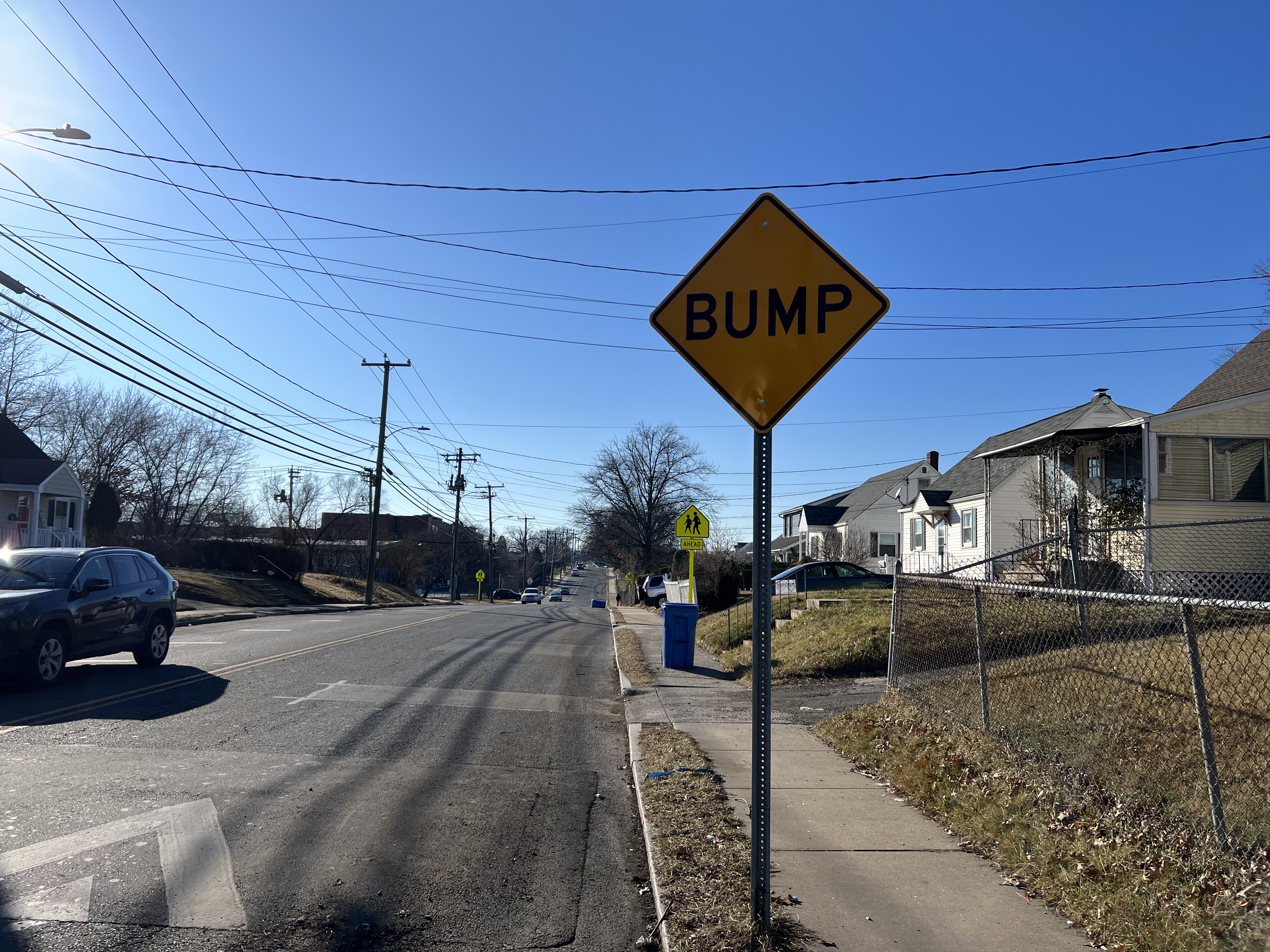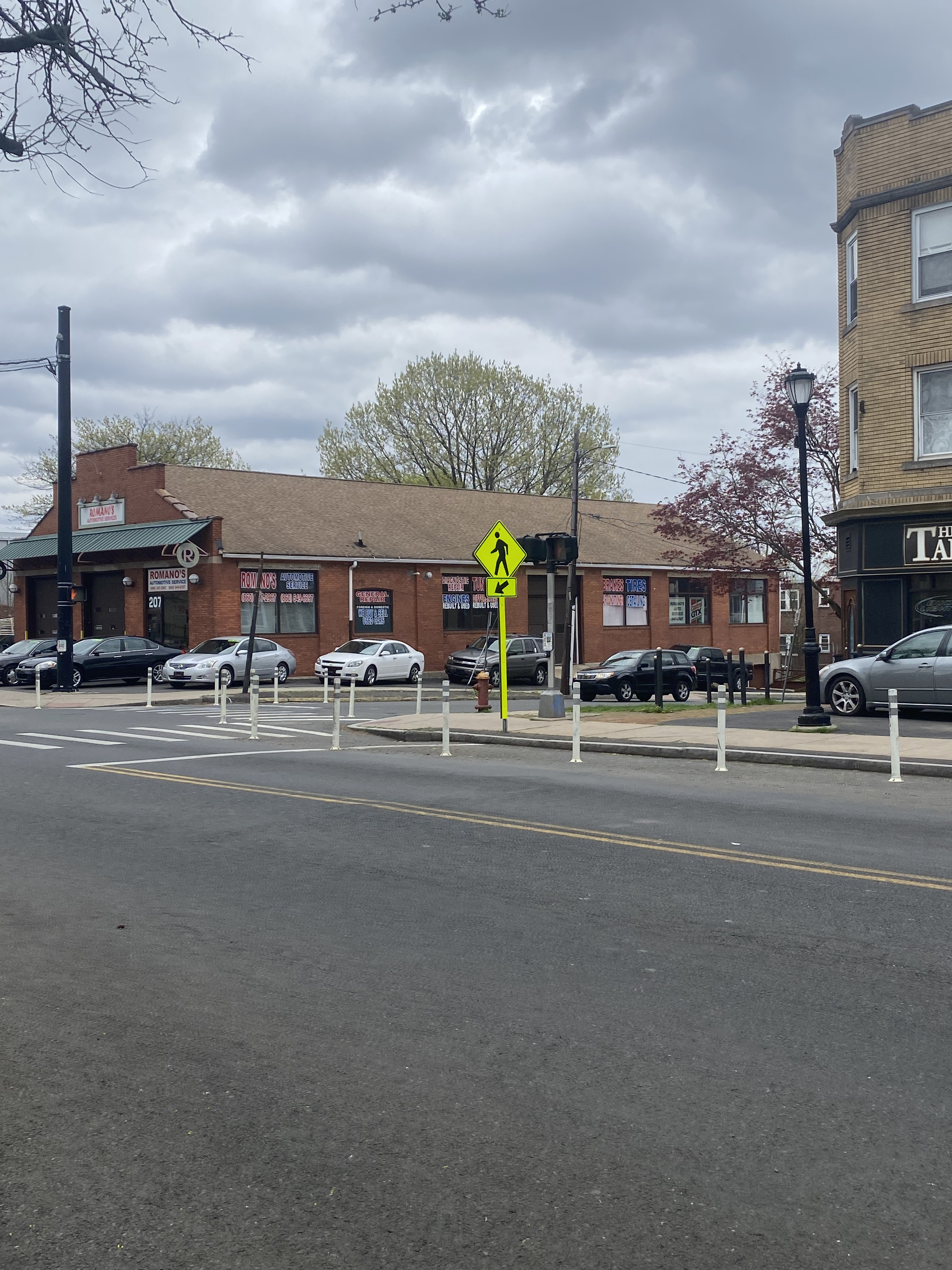Flatbush Avenue Speed Hump Analysis


Photos of speed humps on Flatbush Avenue taken in Feburary of 2023. | Photo credit: Jack Dougherty
Flatbush Avenue is one of Hartford's major roadways that brings commuters from Hartford to West Hartford. Flatbush is a multifuncational roadway, with commuters using it to get on I-84 as well as residents using it to get to their homes and neighborhoods. Several large commercial stores are located on Flatbush as well, adding to the congestion of cars, shoppers and pedestrians that use Flatbush Avenue. Rubber speed humps were installed on Flatbush's eastern side as that section is mainly residential (Yi). These rubber and asphalt speed humps were a part of Hartford's initiative to increase traffic safety around the city especially in residential areas (Stannard). These rubber speed humps were installed in September of 2018 and in October of 2021 were finalized in asphalt (Yi). It is important to note that before being finalized in asphalt, the rubber speed humps were actually taken out in the winter months of 2020 spanning into 2021 (Yi). Unfortunately, it is unclear what exact months these rubber humps were taken out and put back. To migitate confusion and inaccuracy of when speed humps were put back in, these grey area months are included in the post-installation date range. This means that a few months of the post-installation data may have not had speed humps at all. More on this rationale can be found in the Process and Cautions Section. With over 2 years of recorded UCONN crash repository data from post speed hump installation, a crash count analysis can be done to observe crash counts have changed since installation. This analysis can provide the city of Hartford with viable data to help them better understand how these traffic calming measures are impacting the safety of citizens and if they are effective in increasing safety for all who use the roads.
Figure 1: Explore the interactive chart. View the Google data sheet. | The most recent Hartford crash data shows that Flatbush's crash counts decreased from the two years prior to installation compared to crash counts from two years after installation.
Flatbush Avenue had a total of 169 crashes in the two years (Sept. 2018 - Sept. 2020) before the four speed humps were installed. Four rubber speed humps were installed in September of 2020 and converted to more permanent asphalt humps in October of 2021. In the two years (October 2020 - Sep. 2022) after the speed humps were installed 122 crashes occurred. This equates to a -27.81% percent change in crash counts after the speed humps were installed. This can be compared to the control group, Hillside Avenue which has no speed humps and recorded significantly less total crashes than Flatbush. Hillside was found to have 75 crashes in the same two years before the Flatbush speed humps and 37 crashes in the two years after. This yields a large decrease of 50.67%. While Hillside and Flatbush are similar in location they may not have a similar number of crashes due to factors like differing roadway conditions, lighting or traffic patterns. Flatbush contains several large commercial stores that contribute greatly to the amount of people that use Flatbush to commute. Also with significantly lower crash rates, Hillside’s percent change is greatly affected by an individual crash more so than Flatbush.
Even though Flatbush did not experience the same drastic decrease as the control, Flatbush still recorded a significant decrease in crash counts. The decrease in crashes by 27% may be linked to the installation of the speed humps. It cannot be certain though that speed humps were the only reason for this decrease. Other external factors like differing winter conditions from year to year or changes in traffic flow may have also contributed to this decrease. While differing winter conditions may have had an impact on Flatbush’s crash count decrease, each time period had exactly two winters which is typically when a lot of crashes occur due to driving conditions. The seasons were equally distributed between each time period. The pre-installation dates also contain several months at which the pandemic was at its height (March 2020 - August 2020) which may have decreased total crash counts as less people were commuting to and from work. Also some of the post-install months did not conatin speed humps. This may have impacted the number of toal crashes for the post-install time period. With no traffic calming measures it is possible crashes were more likely to occur. Even with the traffic flow effects of Covid possibly lessening the crash counts of pre-install and a few months of no speed humps in the post-install, Flatbush still experienced a decrease from pre-install to post-install.


